Хаас за Великобритания
Ромен Грожан:
Silverstone is one of the fastest tracks in Formula One, but it’s not necessarily from long straights but rather from long, flowing corners. Can you describe the feeling of speed you experience at this power circuit?
It’s a really cool track, especially the fast part through Maggotts, Becketts and Chapel corners. When you have the grip in the car there, you really get the sensation of the g-forces. Everything’s pushing down. You really want to get the first part of the flowing corners right. If you don’t, you just lose a lot of time. When the car is very stable and has good balance, you can go flat out and really push it to the limit.
Knowing how fast these current-generation cars are, what are your expectations in terms of how the car will feel at Silverstone, particularly through the Maggots, Becketts and Chapel corners – an area of the track where you really feel the g-forces being exerted on your body?
I think it’s going to be one of the most exciting tracks of the year to drive. With the new cars, we’re really going to have a lot of downforce, a lot of g-forces through the high-speed corners – which were already really good with the previous cars. Now we’re going to get to another level and I’m looking forward to discovering that.
With speed playing such a role at Silverstone, how difficult is it to overtake? And if the opportunity presents itself, where can you overtake?
There are a few spots. On the straights and through the high-speed corners, you have an opportunity if your car is much better balanced than the car in front of you. After turn three or turn four, there’s the long section after the slow-speed corners, and that’s a good opportunity as well. But the thing about Silverstone is really the difference between a well-balanced car and an unbalanced car – that’s where the opportunity lies.
What do you need at Silverstone to have the proper balance in your racecar?
Silverstone is not an easy track. You’ve got all the high-speed sections, where you really want to carry some speed and get fast. Then you’ve got the twisty turns three and four, then the whole last corner, which is tricky on the throttle application. Generally, you need a good rear-end, and if you get that, you can then put some front-flap on and go faster.
Is Silverstone the track where you’re able to run at full throttle for the longest periods of time?
I think probably Baku we were flat out for longer periods of time, but Silverstone is a power track as well. You need good power to get a good lap time there. There are a few straight lines and a few overtaking opportunities but, mainly, Silverstone is about the grip of the car through the high-speed corners.
How do you find that edge to determine when you can be flat-out and when you can’t?
Well, you find out quickly when you’re wrong, but you have to try. It’s as simple as that. You go step-by-step, but definitely the last step is going flat-out.
How much downforce do you want at Silverstone? As much as you can get, or do you want to be able to slide the car a bit and have a little less drag?
As much as you can get. You’ll always slide the car, so the more downforce, the better.
At most circuits, pole position is critical. But for some reason, not as much at Silverstone, where the pole winner has only gone on to win five times in the last 19 years. Is this happenstance or is there something about the track’s layout that provides more opportunity for those a little deeper on the starting grid?
Silverstone is in the UK, and the UK weather is known to be sometimes rainy, sometimes dry. That plays a part. It can change a lot between qualifying and the race, and then even in the race itself. You can also have a good car in qualifying, but if it’s not quite perfectly balanced for the race, you’ll pay the price. That’s where success lies, and probably why most of the winners didn’t start from pole position.
Do you have any milestones or moments from your junior career that you enjoyed at Silverstone?
I’ve had some good races there. I remember GP2 in 2009 – I scored the pole position by a big margin, that was pretty good fun. In F1, back in 2012, I had a first-lap incident where I had to change the front wing and from there I just pushed all the way. I remember overtaking (Jenson) Button and (Lewis) Hamilton through Maggots, Becketts – the high-speed corners. I came back to sixth from being last on the first lap, which was pretty good.
What is your favorite part of Silverstone?
The high-speed corners at Maggotts, Becketts and Chapel.
Describe a lap around Silverstone.
You start off on the new main pit straight before taking the first turn flat-out. Then you come into two hairpins. The first one is more open than the second one, and the second you really want to go for as early as you can. Then you go through the old last couple of corners – very tricky braking here – before going along the old pit straight. It’s very tricky here on power, as well. Then you get to the very high-speed section. It’s a great sensation in the car here. You stay flat-out as much as you can into Maggotts and Becketts, and then downshifting every corner a gear, and then you’re onto the Hanger Straight to Stowe corner. This is another tricky one where you enter very quickly. You want to go on the power as quick as you can, but the corner is closing down more than you think. Then you go to the last chicane – heavy braking and it’s very bumpy. Then you’ve got your final throttle application with a lot of g-force on the right-hand side and you cross the finish line.
Кевин Магнусен: The British Grand Prix marks your 50th grand prix. Growing up and racing karts, just getting to Formula One probably looked like a long road. Can you talk about the effort you had to put forth to get to this level?
Fifty grands prix doesn’t sound like a lot, but it’s gone quick. It’s not really something I think about, but it’s been a long ride and a quick ride at the same time. I hope to do many more. The effort was all worth it and I’m enjoying my time massively. Being able to do what I love is something I’m extremely grateful for.
Does 50 Formula One starts give you a feeling that you’ve established yourself in the sport?
I feel like I’m still learning a lot. I’m in my third season in Formula One, which isn’t many – a lot of other people are in their 10th season or more. I’m still in the early stages of my career.
There is some chatter about a Formula One race in Denmark and, specifically, Copenhagen. What are your thoughts about potentially having a home grand prix?
I mean, that would be awesome. I really hope it can be done. It’s pretty unexpected, but it would be awesome.
Silverstone is one of the fastest tracks in Formula One, but it’s not necessarily from long straights but rather from long, flowing corners. Can you describe the feeling of speed you experience at this power circuit?
Silverstone is definitely one of the good circuits. It’s really fast and you’ve got some big sections with fast change of directions. I really enjoy driving the circuit.
Knowing how fast these current-generation cars are, what are your expectations in terms of how the car will feel at Silverstone, particularly through the Maggots, Becketts and Chapel corners – an area of the track where you really feel the g-forces being exerted on your body?
I’m just looking forward to having a go. These cars are going to be much faster in those corners than the previous cars. I’m looking forward to it massively.
With speed playing such a role at Silverstone, how difficult is it to overtake? And if the opportunity presents itself, where can you overtake?
It will be quite difficult to overtake at Silverstone, perhaps more difficult than previous years. Probably in the DRS zone and perhaps down Hangar Straight, it will be possible. Qualifying is going to be very important.
Your teammate mentioned that the difference at Silverstone comes down to the opportunity between having a well-balanced car and an unbalanced car. What do you need at Silverstone to have the proper balance in your racecar?
You need good high-speed balance as most of the corners are high speed.
How much downforce do you want at Silverstone? As much as you can get, or do you want to be able to slide the car a bit and have a little less drag?
You definitely want as much as you can.
At most circuits, pole position is critical. But for some reason, not as much at Silverstone, where the pole winner has only gone on to win five times in the last 19 years. Is this happenstance or is there something about the track’s layout that provides more opportunity for those a little deeper on the starting grid?
I think it’s just by chance.
Do you have any milestones or moments from your junior career that you enjoyed at Silverstone?
I’ve won many times there, so it’s a place with good memories for me.
What is your favorite part of Silverstone?
Maggots and Becketts because they’re the high-speed turns.
Describe a lap around Silverstone.
Usually windy, bumpy and wet.
Гюнтер Щайнер: The time between Austria and Silverstone is tight with back-to-back grands prix. How do these back-to-back race weekends compare to back-to-back fly-away races? Is it actually harder because the same transporters and equipment need to be moved from Austria to England?
It’s about the same. You use different means of transport, but either way the schedule is very tight. It’s all well organized, so normally there are no problems.
Silverstone is a home race for most Formula One teams, as even Haas F1 Team has a European base that is approximately 30 minutes from the track. NASCAR’s home race for teams is Charlotte, North Carolina, and for those races, each crew member arrives on his or her own, driving and sometimes even cycling from home. Is this possible for our crew members, or do you treat it the same as any other race and put everyone up in a hotel and they ride together to the track?
Travel is a little bit mixed for the team members. Some stay at home and then take a bus to the track since there is limited parking, while others will stay at a hotel and then also take a bus to the track. If they arrive at our Bunbury location at a certain time, they can catch a ride to the track as well.
Track records have been broken at every track Formula One has visited so far this season. With Silverstone being the first true power circuit of the year, what affect will the increased speeds have on your car’s setup compared to last year when the speeds and the amount of downforce you had were lower?
We’ve gone faster at every circuit this year because of these new cars with the new regulations. With the wider cars and more downforce, we just go faster. And for the setup, we will use what we learned from the last nine races before Silverstone.
Silverstone is a fast track where drivers are able to run full throttle for long periods of time. How do you help them find that edge to determine when they can be flat out and when they can’t?
They find that edge themselves. If the engineering team gives them a good, stable car, they are not afraid to go flat-out. But they need to be confident that the car will do what they want the car to do, and that is down to the engineering team.
Considering these current-generation cars are built with an inherently high amount of downforce, how much downforce are you able to take away to give the cars more speed in the straights without jeopardizing corner speed?
There is no number to it. There is always a compromise between corner speed and straight-line speed, and that is best found in the simulations before the race weekend. Normally, you get very close to it, but the fine-tuning is still on the track.
How much downforce do you want in the car at Silverstone? As much as the driver can get, or do you want him to be able to slide the car a bit and have a little less drag?
The car must be stuck to the ground. As soon as you take away too much downforce, the tires won’t last and you begin to have graining, which the drivers do not like. We have to take off just enough downforce so that the car doesn’t slide and start going through the tires too quickly. It’s less about the driver feel and more about tire preservation. The driver may be more comfortable when the tire is going away, but then you risk the chance of the tire going out.
With increased speed comes an increased need for braking ability. Where is Haas F1 Team with its brake technology and is there a plan to again outfit the cars with Carbon Industrie brakes like it did during practice for the Russian Grand Prix in late April?
We have a plan to fit the cars with Carbon Industrie brakes on Friday – both cars in FP1 and, hopefully, FP2 – to see if it all works on our second attempt. If it all works, we will use them over the weekend, but we can only commit to that after we’ve had one practice.
Cooling the Carbon Industrie brakes was problematic when you first used them in the Russian Grand Prix. What have you done to alleviate the cooling problem without sacrificing aerodynamic performance?
The aerodynamics team did a lot of CFD work and then we had to modify the brake discs according to what we found using CFD.
At most circuits, pole position is critical. But for some reason, not as much at Silverstone, where the pole winner has only gone on to win five times in the last 19 years. Is this happenstance or is there something about the track’s layout that provides more opportunity for those a little deeper on the starting grid?
I don’t think there is a specific reason. I know that it is, for sure, possible to overtake at Silverstone, but I think so few people not winning from the pole is more happenstance than anything.
Weather tends to be a large variable at Silverstone, with hot weather interspersed with cool, blustery and even raw conditions. How do you prepare for temperature swings and weather changes, be it at Silverstone or anywhere else?
Other than having data together for the tires and how they work in the different temperatures, it’s honestly hard to prepare. The best we can do is keep our eye on it and go with what the weather gives us.


















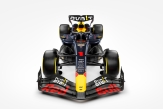
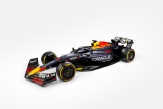

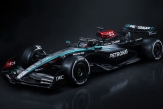
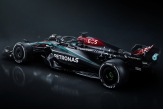


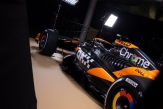

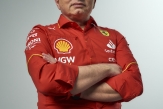
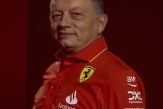
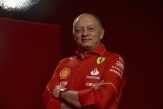

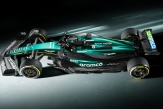




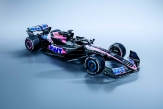
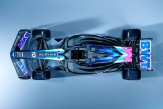






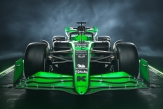

15/04/2024 от Огнян Тенчев (drJeckyll), няма коментари